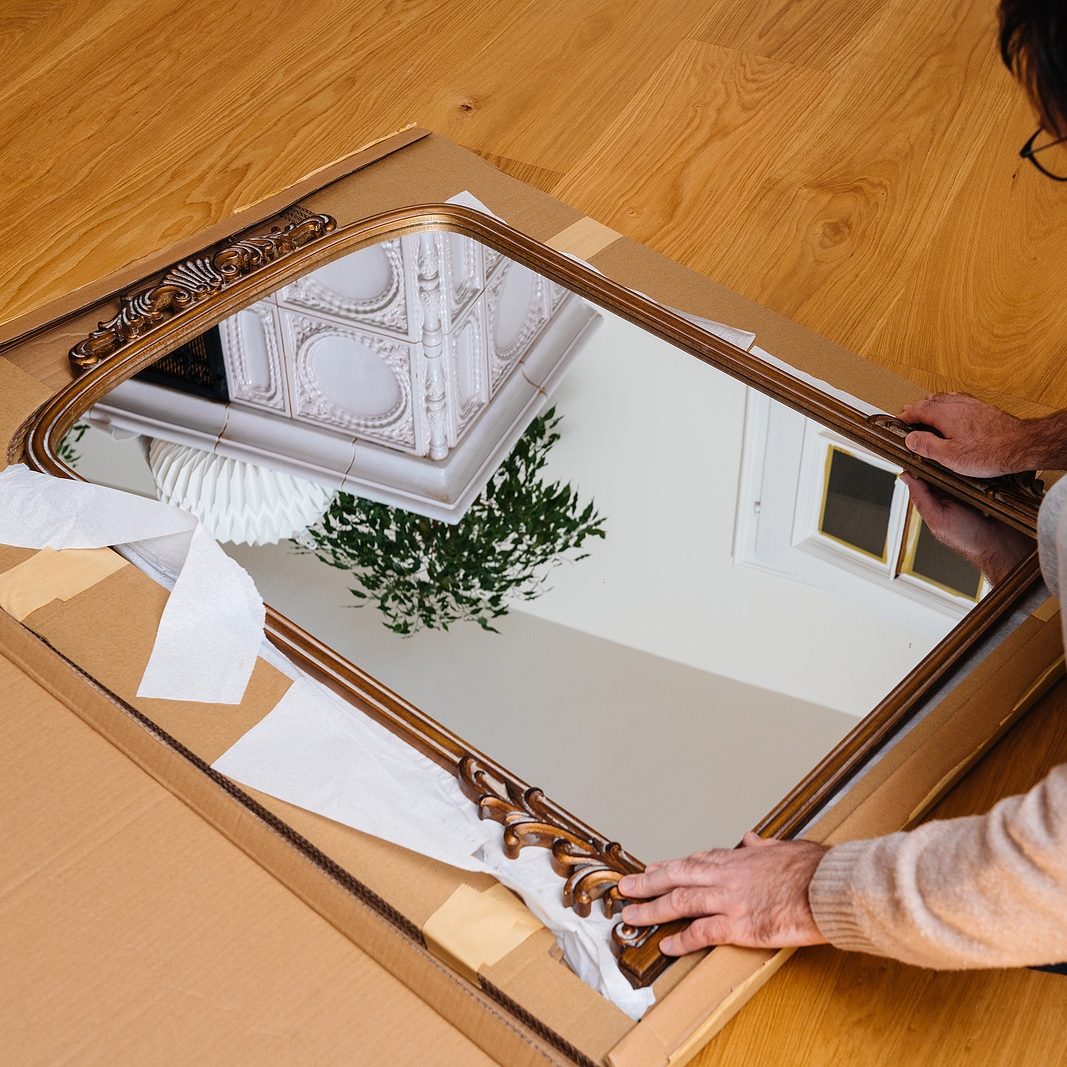Properly packing mirrors for a move requires specific techniques and materials to ensure their safe transport. Using the right approach helps prevent damage and ensures they arrive intact. This guide explores professional methods to protect mirrors of all sizes while incorporating affordable moving services to assist with a stress-free relocation.
Essential Packing Materials and Equipment
Gathering the right materials is the first step in ensuring mirrors are well-protected during a move. Sturdy mirror boxes or telescoping boxes provide the structural support needed for safe transportation. Heavy-duty packing tape reinforces box integrity, preventing unexpected openings. Bubble wrap cushions the glass, while packing paper acts as a protective barrier between the mirror and other materials. Corner protectors shield edges from impact, and foam padding adds another layer of security, especially for antique or delicate mirrors. Labeling materials and packing blankets further enhance protection, reducing the risk of scratches or breakage.
Mirror Preparation Techniques
Taking the time to prepare mirrors before packing significantly reduces the risk of damage. Begin by thoroughly cleaning the glass to remove any dust or debris that could cause scratches. Measure the mirror carefully to ensure it fits into the selected box with adequate padding. If the mirror is mounted on a wall, remove any hanging hardware that might puncture the packaging. Applying masking tape in an X-pattern across the glass can help contain shards in case of breakage. Documenting the mirror’s condition with photos before packing provides a reference if any issues arise during the move.
Professional Wrapping Methods
Proper wrapping techniques create a strong defense against impact. Start by placing a layer of packing paper over the mirror to prevent direct contact with bubble wrap. Wrap the mirror in bubble wrap with the bubbles facing outward to avoid marks on the glass. Secure the edges with corner protectors, then add additional layers of bubble wrap for enhanced cushioning. Be mindful when applying packing tape, ensuring it doesn’t touch the mirror surface. Wrapping the mirror completely and sealing all open areas minimizes exposure to external forces, keeping it well-protected.
Boxing and Securing Methods
Once wrapped, mirrors need to be placed in sturdy boxes that provide both support and space for extra padding. Choose a box slightly larger than the wrapped mirror, allowing room for cushioning materials. Line the bottom of the box with padding to absorb shock, then place the mirror upright inside. Fill any remaining gaps with foam or crumpled packing paper to prevent movement during transit. Seal the box securely using reinforced tape, focusing on the seams and edges. Label all sides of the box with “FRAGILE – MIRROR” and indicate the correct orientation for handling. For additional security, double-boxing may be useful for high-value mirrors, ensuring maximum protection throughout the move.
Safe Handling and Transportation
Handling packed mirrors correctly reduces the chances of breakage. Always transport them in an upright position rather than laying them flat, as this prevents excess pressure on the glass. When lifting, keep the mirror close to your body to maintain control. In the moving truck, secure the box against a stable surface to minimize shifting. Avoid placing heavy objects on or near the mirror to prevent accidental damage. If transporting valuable or antique mirrors, consider climate-controlled moving options to protect against extreme temperature fluctuations. Regularly check the mirror’s placement during transit to ensure it remains secure and undisturbed.
Using the right techniques and materials when packing mirrors ensures they arrive at their new destination without damage. Following these steps provides peace of mind, allowing you to focus on settling into your new space.
Other related articles:

